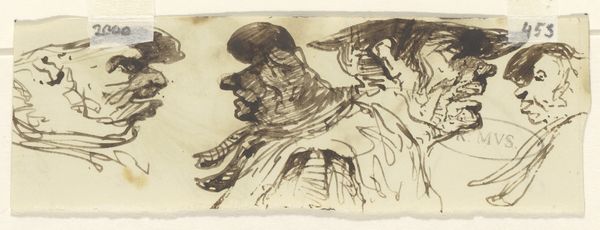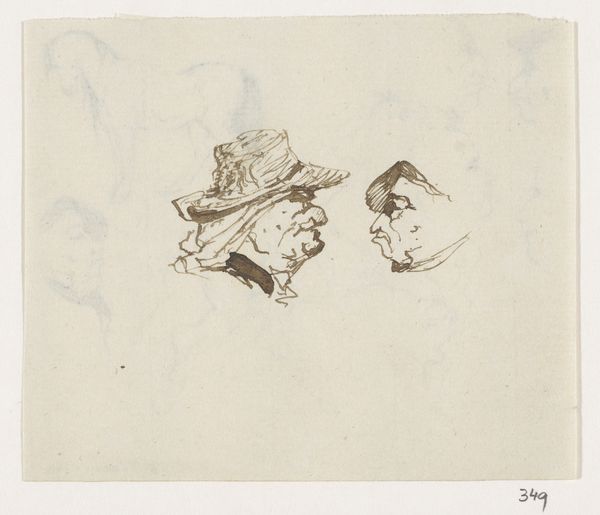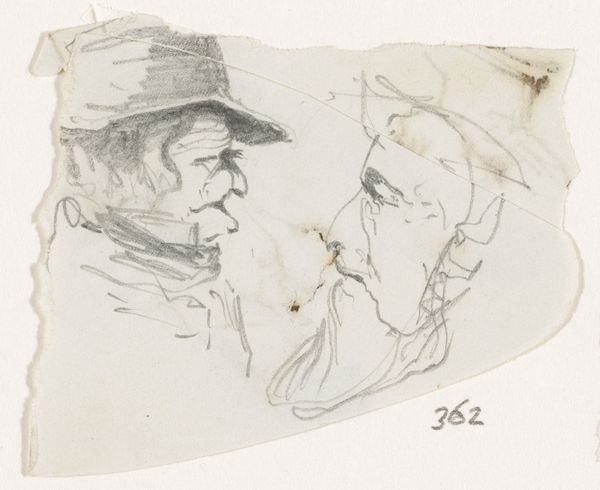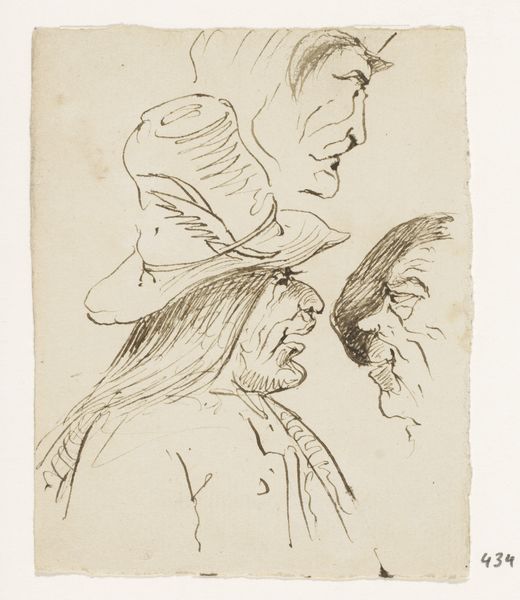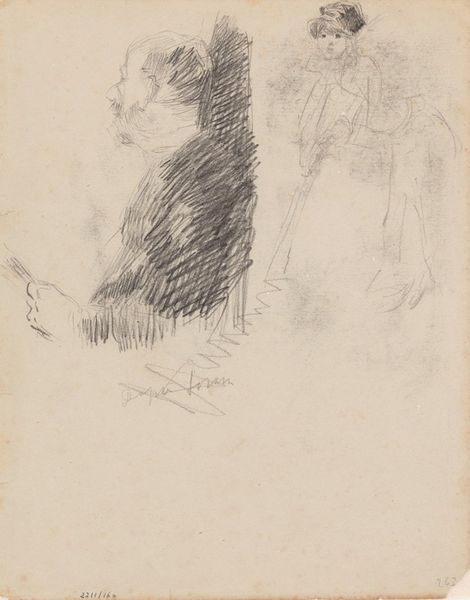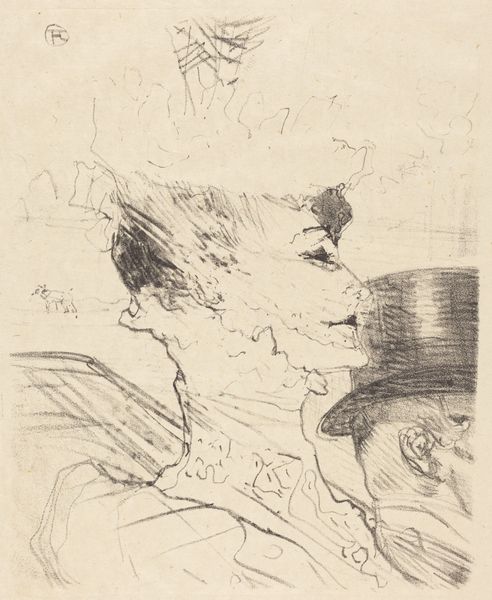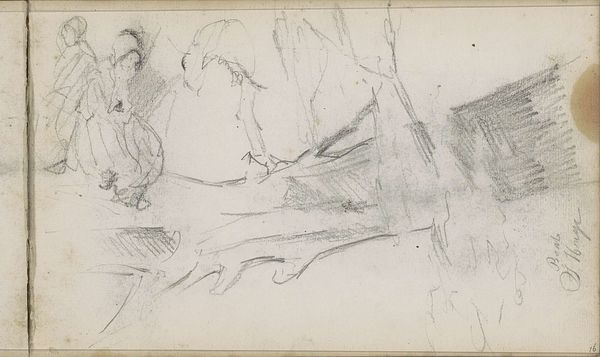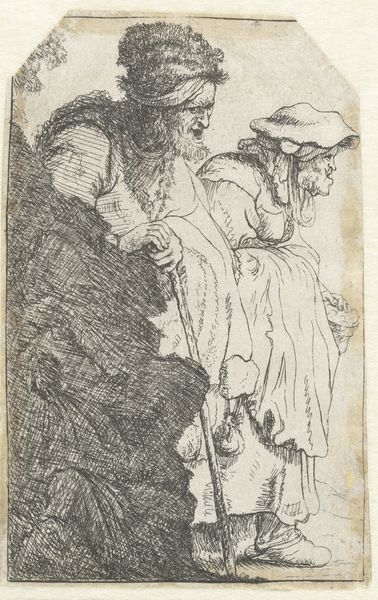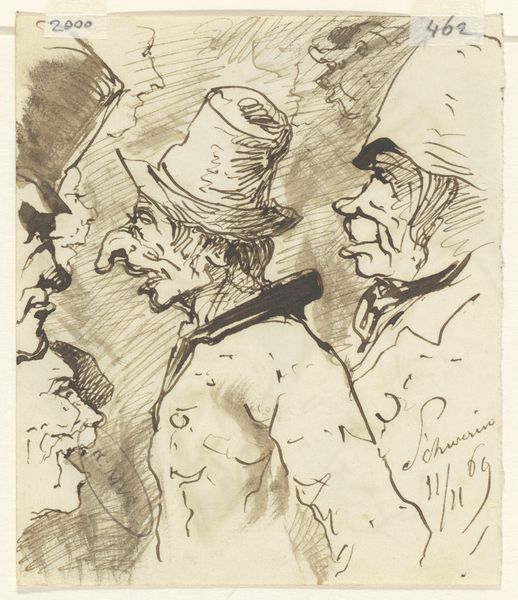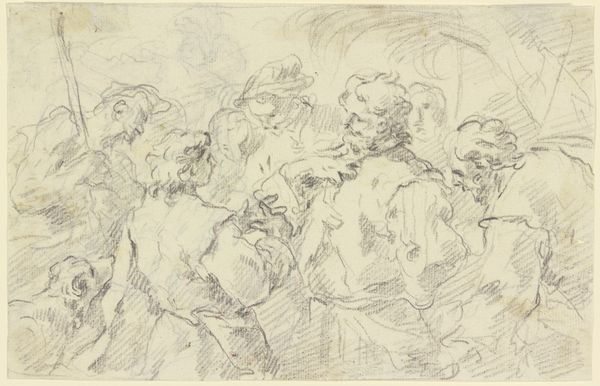
drawing, pencil
#
portrait
#
drawing
#
ink drawing
#
pen sketch
#
pencil sketch
#
pencil
#
realism
Dimensions: overall (approximate): 10.5 x 15.6 cm (4 1/8 x 6 1/8 in.)
Copyright: National Gallery of Art: CC0 1.0
Curator: Adolph Menzel's 1899 pencil drawing, "Heads of a Man and a Woman," presents two contrasting profiles on a single sheet. What catches your eye initially? Editor: It feels like a study in contrasts. One figure is almost engulfed in shadow, dominated by an elaborate, almost theatrical hat, while the other is rendered with a lighter, more fleeting touch. There’s a real tension in their placement and style. Curator: That dramatic hat on the left figure immediately evokes historical associations. It resembles the elaborate headwear of the late 17th and 18th centuries, a period of rigid social hierarchies. The deep shading adds to the sense of weight and formality, creating a distinct contrast to the figure to its right. Editor: Absolutely, and placing that figure next to the more lightly sketched man, who appears almost like a ghostly afterthought, raises questions of class and power. Is Menzel commenting on the transience of authority, perhaps, or the societal pressures exerted upon the individuals? Curator: The pen and pencil technique itself becomes significant. Menzel’s loose strokes, especially in the rendering of the second head, gives it an immediacy. The lack of defined detail could speak to a broader, less fixed social role compared to the rigid persona evoked by the figure to the left. Editor: I see a duality in the drawing—not just in the depiction of individuals but also within the medium. The contrast in shading becomes a visual metaphor for social stratification and visibility. Who gets remembered, who fades away? And why? Curator: His masterful control of line creates a narrative tension beyond just portraiture. Menzel doesn't simply capture appearances; he invites us to delve deeper into the hidden psychological and societal forces that shape these appearances, those things that lie unseen just beneath the surface. Editor: It's a subtle reminder that portraiture, even in its most straightforward form, always engages in the construction of identity—and the political context within which these identities are formed. Thanks for unpacking that with me. Curator: It's fascinating how a simple sketch can reveal so much about social performance. Art unlocks how the signs and signifiers work together to reflect complex power structures.
Comments
No comments
Be the first to comment and join the conversation on the ultimate creative platform.
